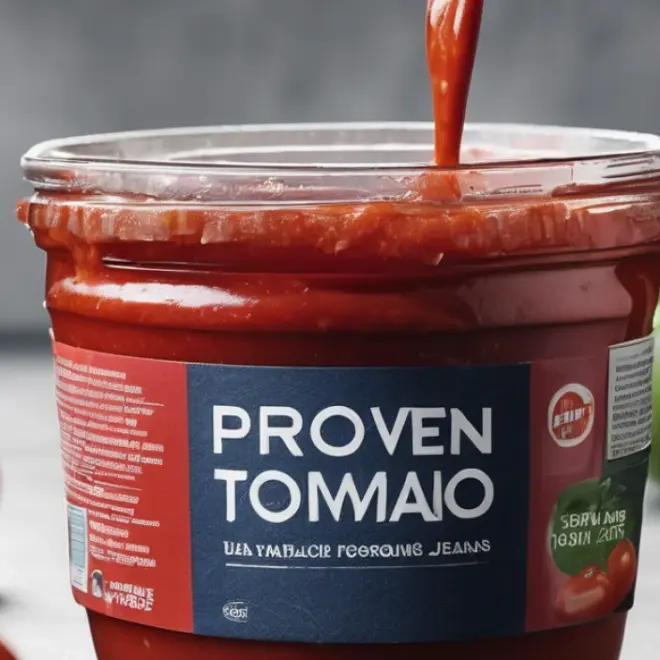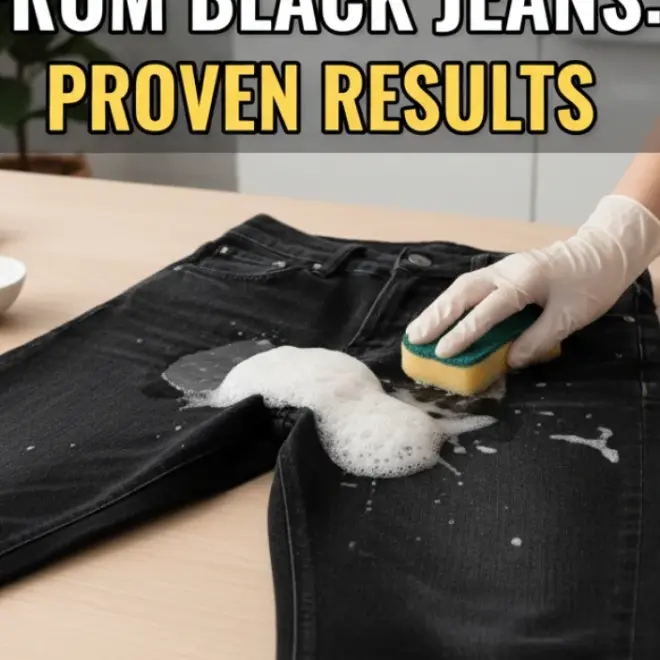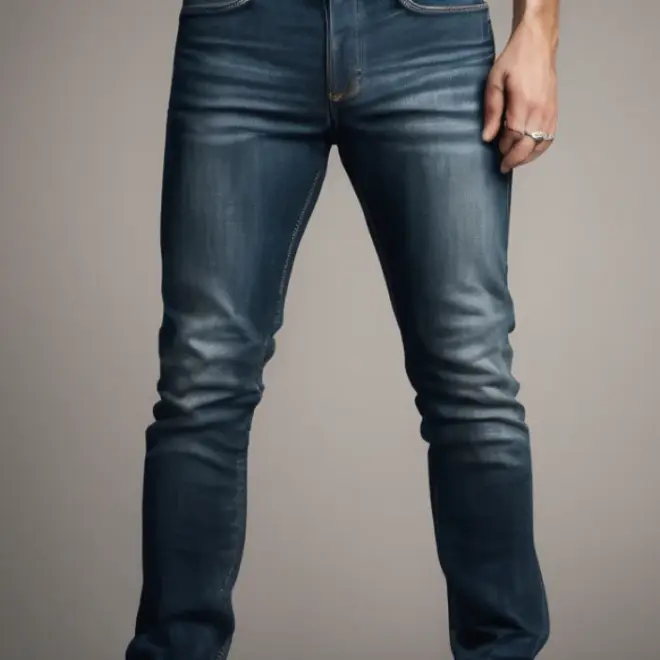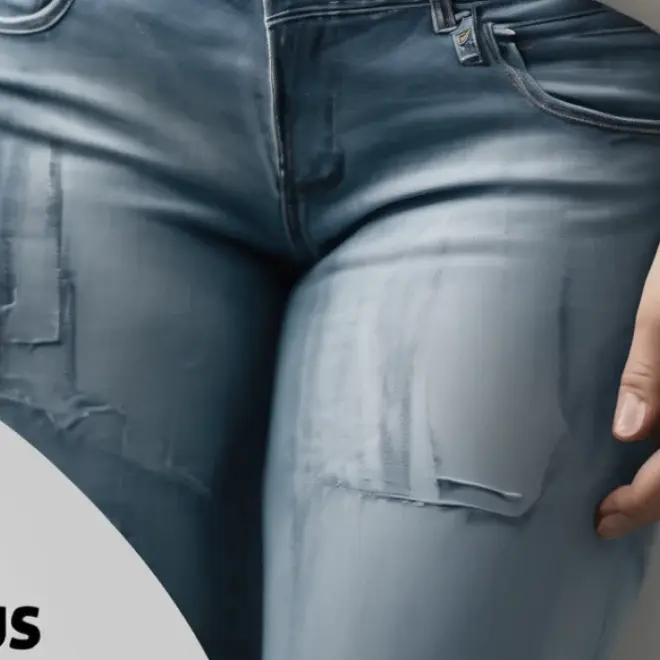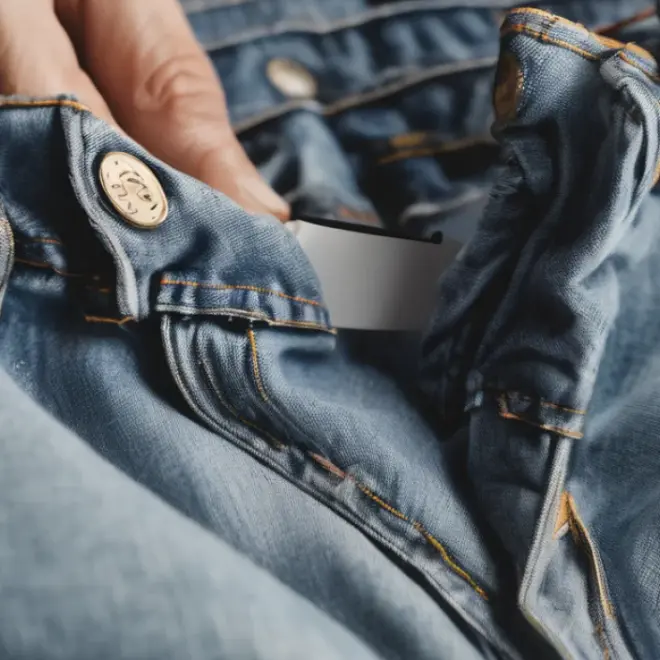Quick Summary: To remove fish sauce from white jeans, act fast by blotting excess, then use a gentle stain remover like dish soap or an enzyme cleaner for denim, followed by a cold water wash. For tougher stains, a diluted vinegar or hydrogen peroxide pre-treatment might be needed, always testing on an inconspicuous area first.
Oh, the dreaded fish sauce stain! It happens. One moment you’re enjoying delicious food, the next, a splash escapes, and your pristine white jeans are the unintended canvas. Don’t panic! Fish sauce, with its strong aroma and oily nature, can seem like a stubborn foe, especially on white fabric. But with the right approach and a few simple household items, you can banish that stain and save your favorite pair of jeans. This guide will walk you through the most effective methods, ensuring a clear, step-by-step process that’s easy to follow.
Understanding the Fish Sauce Stain on White Jeans
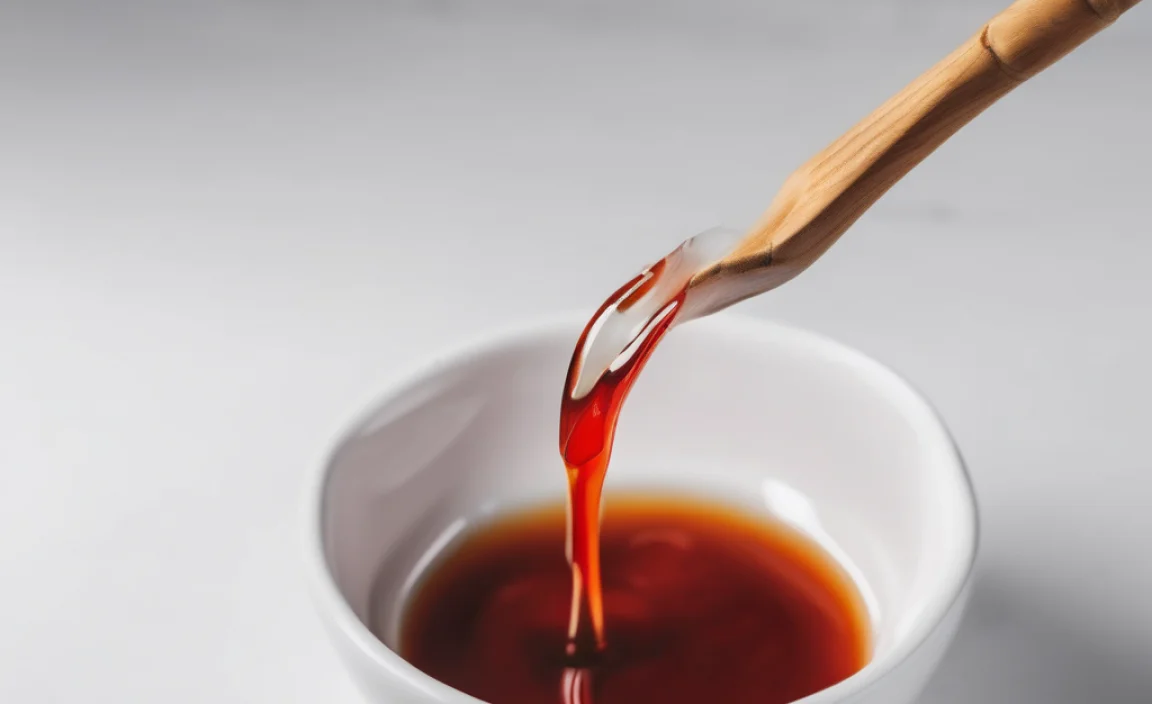
Fish sauce is made from fermented anchovies, salt, and water. This fermentation process creates a complex mixture that can penetrate fabric quickly due to its oily components and potent protein and amino acid compounds. On white jeans, these elements can bind to the fibers, leading to discoloration and that unmistakable, lingering odor. The key to successfully removing these stains is to act promptly and use methods that break down these organic compounds without damaging the denim or causing further yellowing.
Why White Jeans Are Tricky
White fabrics are notorious for showing every little mark, and denim, while durable, can be sensitive to harsh chemicals. White jeans combine these challenges, meaning any stain is highly visible, and aggressive cleaning tactics can sometimes leave behind yellowing or weakened fabric. Our goal is to lift the stain effectively while preserving the integrity and brightness of your white denim.
Immediate Action: The First 5 Minutes
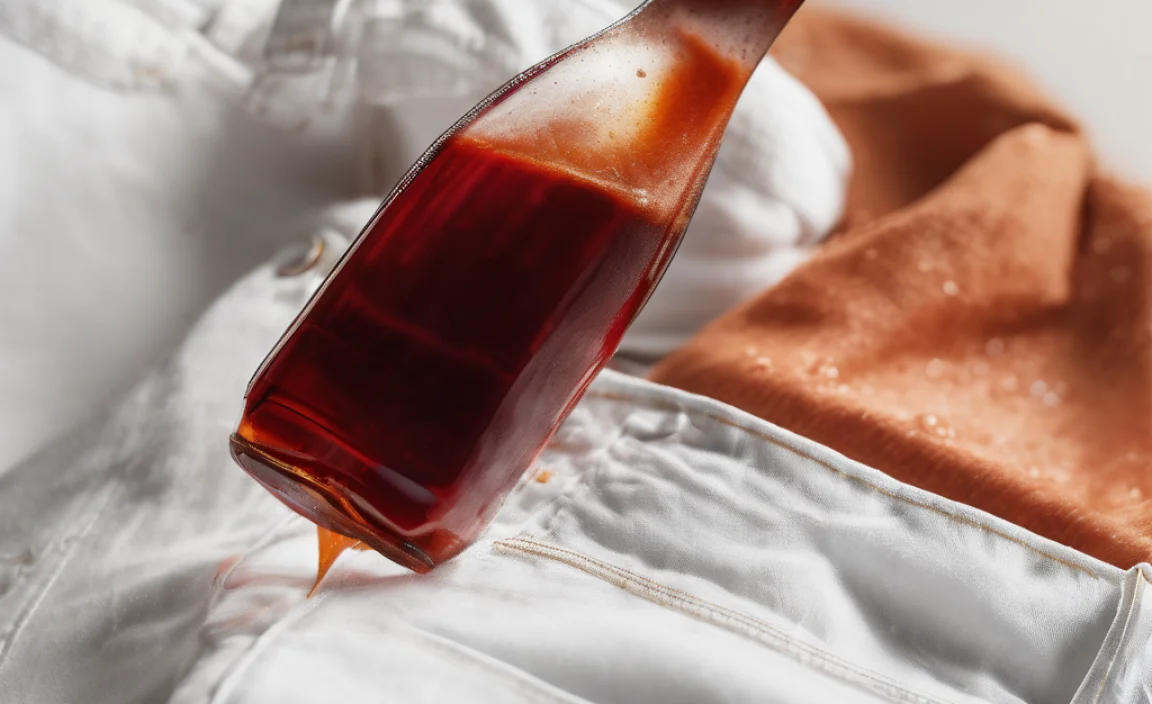
The single most crucial step in removing any fresh stain, especially from white jeans, is speed. The longer the fish sauce sits, the deeper it will penetrate the denim fibers, making removal more difficult.
Blot, Don’t Rub!
As soon as the spill happens, grab a clean, dry cloth, paper towel, or even a clean napkin. Gently blot the stained area. Resist the urge to rub. Rubbing can spread the stain and push it further into the fabric. Think of it as dabbing up excess liquid rather than scrubbing it out.
Remove Excess Sauce
If there’s any liquid fish sauce on the surface, carefully try to lift it away with the edge of a spoon or a dull knife. Be gentle to avoid damaging the fabric.
Step-by-Step Stain Removal Methods
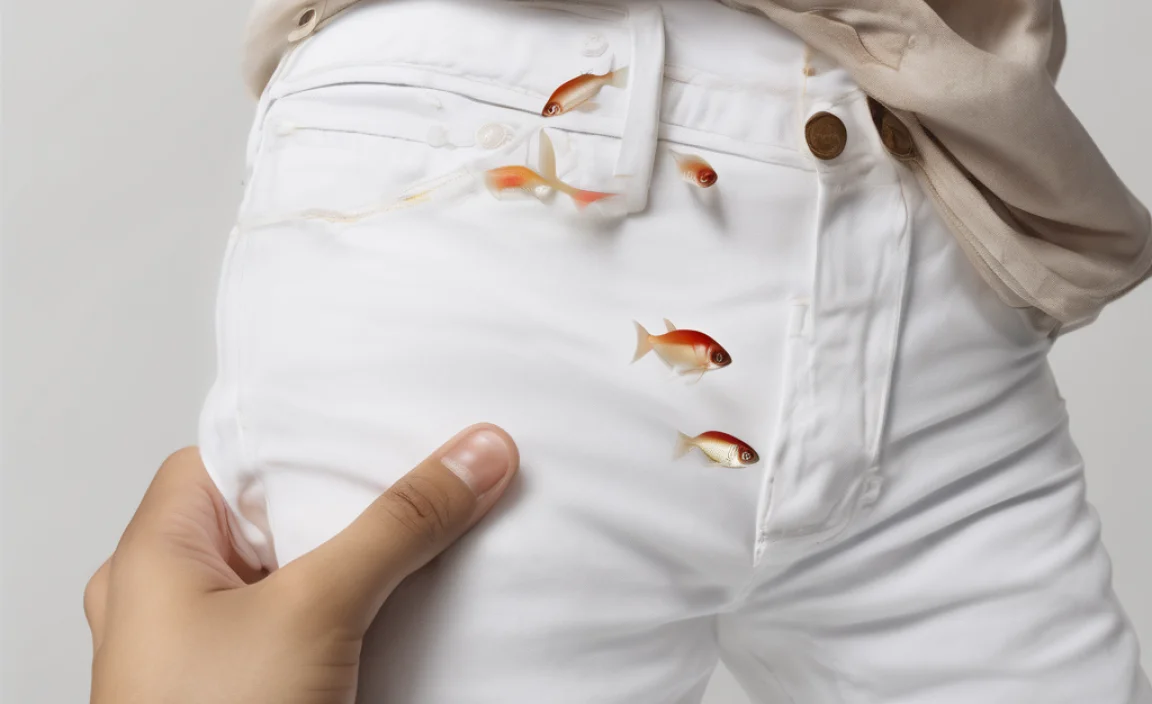
Once you’ve blotted up the excess, it’s time for the cleaning process. We’ll start with gentler methods and move to stronger ones if needed. Always remember to test any cleaning solution on an inconspicuous area of your jeans first—like the inside of a hem or pocket—to ensure it doesn’t cause damage or discoloration.
Method 1: Dish Soap and Cold Water (Best for Fresh Stains)
Dish soap is excellent at breaking down grease and oil, which are components of fish sauce.
What You’ll Need:
- Mild dish soap (like Dawn)
- Cold water
- Clean cloths or paper towels
- A soft-bristled brush (optional)
Instructions:
- Rinse the back of the stain: If possible, hold the stained area under cold running water, allowing the water to flow from the back of the fabric. This helps push the stain out rather than further in.
- Apply dish soap: Gently work a small amount of mild dish soap directly into the stained area. You can use your fingers or a soft-bristled brush.
- Let it sit: Allow the dish soap to sit on the stain for 5-10 minutes.
- Rinse again: Rinse the area thoroughly with cold water.
- Check the stain: Inspect the jeans. If the stain is gone or significantly lighter, you can proceed to wash as usual. If it persists, move to the next method.
Method 2: Enzyme Cleaner (Excellent for Organic Stains)
Enzyme cleaners are specifically designed to break down organic matter, making them very effective against protein-based stains like fish sauce.
What You’ll Need:
- Enzyme-based stain remover (look for products formulated for pet stains or laundry)
- Cold water
- Clean cloths or paper towels
Instructions:
- Apply the cleaner: Follow the product’s instructions. Typically, you’ll spray the enzyme cleaner directly onto the stain, ensuring it’s fully saturated.
- Let it work: Allow the cleaner to penetrate the fabric for at least 15-30 minutes, or as directed by the product. For tough stains, you might let it sit for a couple of hours.
- Gently agitate: You can lightly rub the fabric together or use a soft brush to help the cleaner work into the fibers.
- Rinse: Rinse the area thoroughly with cold water.
- Inspect and repeat if necessary: If the stain is gone, proceed to wash. If it’s still visible, you can reapply the enzyme cleaner or try another method.
Method 3: White Vinegar (Natural Deodorizer and Stain Fighter)
Vinegar is a mild acid that can help break down stains and neutralize odors. Its acidity is generally safe for denim, especially when diluted.
What You’ll Need:
- White vinegar
- Cold water
- Clean cloths or paper towels
Instructions:
- Create a dilution: Mix equal parts white vinegar and cold water (1:1 ratio).
- Apply the solution: Dampen a clean cloth with the diluted vinegar solution and blot the stained area. You can also pour a small amount directly onto the stain.
- Let it soak: Allow the solution to sit on the stain for about 10-15 minutes.
- Rinse: Rinse the area thoroughly with cold water.
- Check and wash: If the stain has vanished, wash your jeans as usual. If a faint mark remains, you might need to try a more potent method or repeat this step.
Method 4: Hydrogen Peroxide (For Stubborn Stains, Use with Caution)
Hydrogen peroxide is a mild bleaching agent and can be effective on stubborn stains on white fabrics. However, it should be used with caution on colored denim as it can cause bleaching, and even on white, it’s wise to test first and dilute it.
What You’ll Need:
- 3% hydrogen peroxide solution (available at most drugstores)
- Cold water
- Clean cloths or paper towels
- Baking soda (optional, to create a paste)
Instructions:
- Test first: Apply a tiny amount of 3% hydrogen peroxide to an inconspicuous area of the jeans. Wait a few minutes to ensure it doesn’t damage or discolor the fabric.
- Apply to stain: If the test is successful, dampen a clean cloth with the 3% hydrogen peroxide solution and gently blot the stain. Alternatively, you can directly apply a small amount of peroxide to the stain.
- For extra power (optional): You can create a paste by mixing hydrogen peroxide with a little baking soda. Apply this paste to the stain and let it sit for 15-20 minutes.
- Let it sit: Allow the hydrogen peroxide solution or paste to work on the stain for about 10-20 minutes. Keep an eye on it.
- Rinse thoroughly: After the allotted time, rinse the area extremely well with cold water to remove all traces of the peroxide.
- Wash: If the stain is gone, wash your jeans as normal.
Washing Your White Jeans After Treatment
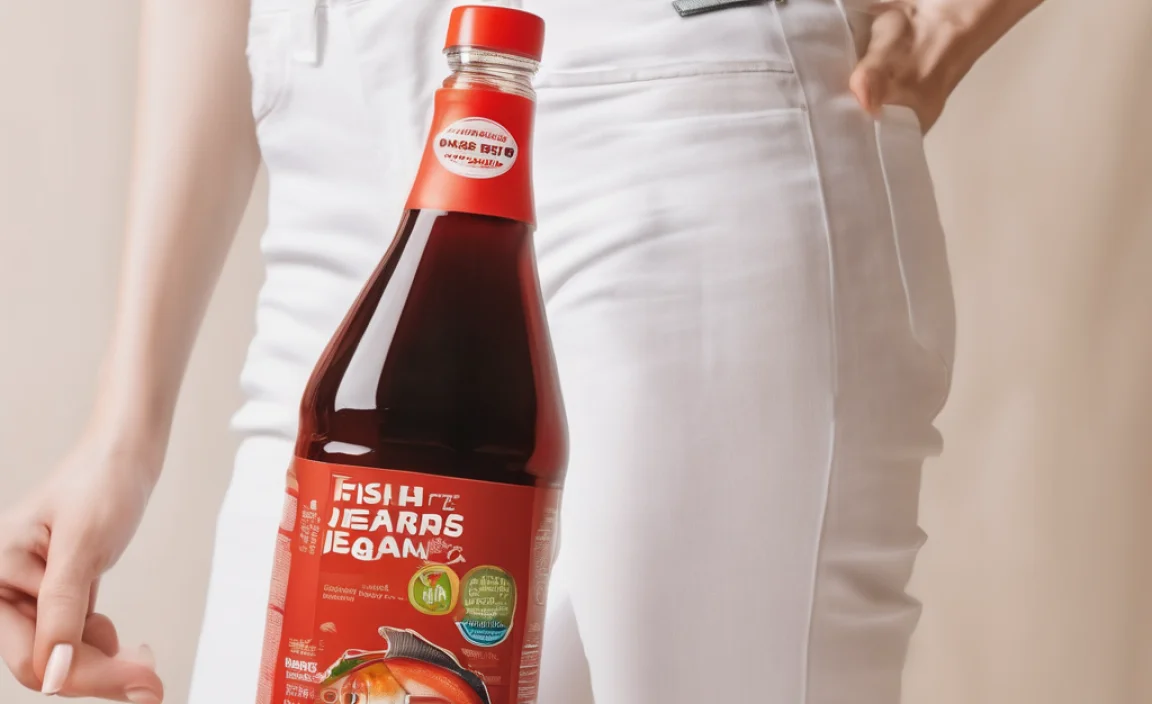
Once you believe the stain is removed or significantly faded, it’s time to wash your white jeans. The washing process helps to remove any residual cleaning solution and ensure the stain is completely gone.
Pre-Wash Check
Before tossing your jeans in the washing machine, always inspect the stained area one last time. If you can still see any hint of the stain, repeat the chosen cleaning method or try a different one. Washing can sometimes set a remaining stain, making it much harder to remove later.
Washing Instructions
- Use cold water: Always wash white jeans in cold water, especially after treating a stain. Hot water can set stains.
- Add your regular detergent: Use your usual laundry detergent. You can also add a laundry booster or oxygen bleach (like OxiClean) if you wish to enhance brightness, but ensure it’s safe for denim.
- Wash on a gentle cycle: A gentle cycle will be kinder to the fabric.
- Consider a double rinse: If you’re concerned about residual cleaning agents, a double rinse cycle can help ensure everything is washed away.
Drying Your White Jeans
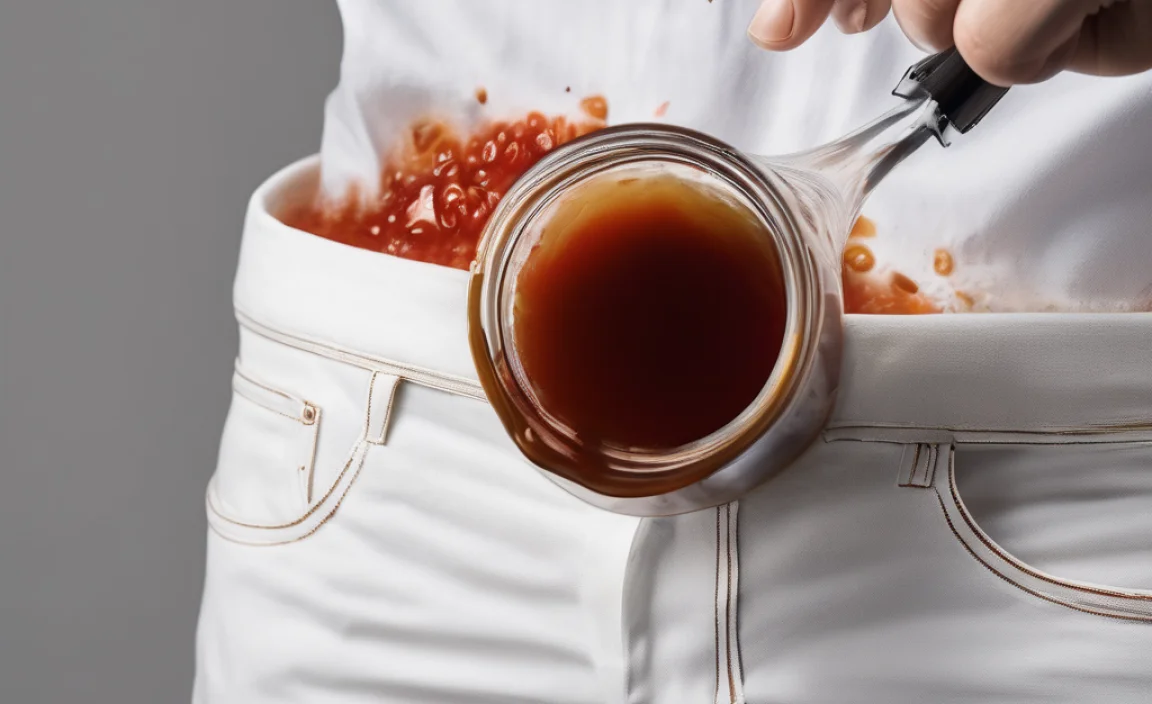
The drying process is as critical as the washing. Just like washing, improper drying can set any remaining stain.
Air Dry First!
This is a crucial rule for stain removal on white items. Never put stained or potentially stained clothing in a hot dryer. The heat from the dryer can permanently set any remaining traces of the stain, making it almost impossible to remove. Always air dry your white jeans after washing, preferably in the sun if possible. Sunlight has natural bleaching properties that can help further lift faint stains and brighten whites.
Inspect Again
Once your jeans are completely dry, inspect the area where the stain was. If the stain is completely gone, congratulations! You can now wear your jeans with confidence. If you notice any faint trace of the stain, do not despair. You can repeat the cleaning process or try a different method. Sometimes, a stain requires a second treatment.
Dealing with Old or Set-In Fish Sauce Stains
If you discovered the stain long after it happened, or if previous attempts haven’t fully worked, you’re dealing with a set-in stain. These are tougher, but not impossible.
Soaking is Key
For older stains, a longer soaking period with a powerful yet safe cleaning agent is often necessary. You can try soaking the stained area (or the entire pair of jeans if you’re worried about evenness) in a solution of cold water and an enzyme-based cleaner or an oxygen bleach designed for whites.
Soaking Guide:
- Fill a basin or sink with cold water.
- Add the recommended amount of enzyme cleaner or oxygen bleach for soaking (check product labels).
- Submerge the stained jeans.
- Let them soak for at least 4-8 hours, or even overnight for very stubborn stains.
- After soaking, gently rub the stained area.
- Rinse thoroughly and wash as usual, air-drying afterward.
You can find excellent enzyme cleaners and oxygen bleaches at most major retailers. For instance, products like OxiClean are widely recommended for their effectiveness on organic stains and are generally safe for most fabrics when used according to instructions. Always check the fabric care label on your jeans and the cleaning product.
Prevention and Quick Tips
The best way to deal with fish sauce stains is to prevent them! But when accidents happen, quick action and the right tools are your allies.
Keep a Stain Pen Handy
A portable stain remover pen or wipe can be a lifesaver for immediate treatment when you’re on the go.
Know Your Fabric
Always check the care label on your white jeans. Most denim is cotton or a cotton blend, which is relatively resilient. However, very delicate white fabrics might require gentler approaches.
Avoid Heat Until Stain is Gone
We can’t stress this enough: no dryer heat until the stain is completely out!
Table: Stain Removal Methods at a Glance
Here’s a quick comparison of the methods discussed, helping you choose the best approach.
| Method | Best For | Pros | Cons | Caution |
|---|---|---|---|---|
| Dish Soap & Cold Water | Fresh, greasy stains | Gentle, readily available, breaks down oil | May not work on older or set-in stains | Use mild dish soap; avoid colored varieties. |
| Enzyme Cleaner | Organic, protein-based stains (fish sauce is ideal) | Highly effective at breaking down stain molecules, good for odors | Requires specific purchase, can be pricier | Follow product instructions carefully. Test for colorfastness. |
| White Vinegar | Mild stains, odor neutralization | Natural, readily available, deodorizes | May not remove deep-set stains, strong smell initially | Dilute with water (1:1) to prevent fabric damage. |
| Hydrogen Peroxide (3%) | Stubborn, dark set-in stains | Mild bleaching action, effective on whites | Can bleach colored fabrics, requires care and testing | Always test on an inconspicuous area first. Dilute if unsure. |
Frequently Asked Questions (FAQs)
Q1: Will bleach remove fish sauce from white jeans?
Chlorine bleach can remove many stains from white fabrics, but it’s often too harsh for denim and can weaken fibers over time, potentially causing yellowing or damage. Oxygen-based bleaches (like OxiClean) are a much safer and often equally effective alternative for white denim, especially when used as a soak. Always check your jeans’ care label; some denim is not suitable for any type of bleach.
Q2: Can I use a regular laundry detergent for pre-treating?
Most regular laundry detergents contain enzymes and surfactants that can help with stains. You can try working a bit of your liquid laundry detergent directly into the stain before washing, similar to how you’d use dish soap. However, dedicated stain removers often have a higher concentration of the necessary stain-fighting agents.
Q3: My white jeans still smell like fish sauce even after washing. What should I do?
The odor is often tougher than the visible stain. Try soaking the jeans overnight in a solution of cold water with a generous amount of either white vinegar or an enzyme cleaner. These are excellent at neutralizing organic odors. After soaking, wash them again as usual, and air dry. Sunlight is also a great natural deodorizer for white fabrics.
Q4: How long should I soak my white jeans for tough stains?
For tough or set-in stains, soaking is your best friend. Aim for at least 4-8 hours. If you’re concerned about the fabric and the stain is very stubborn, you can soak overnight. After soaking, gently rub the stained area before proceeding to a regular wash cycle. Always use cold water for soaking and washing.
Q5: Is it safe to put white jeans in the washing machine if the stain isn’t completely gone?
It’s generally not recommended. Heat from the dryer can set a remaining stain, making it permanent. Even the agitation in the washing machine can sometimes work a remaining stain deeper into the fibers. It’s best to ensure the stain is as gone as possible before washing, and definitely before drying in a machine. Air dry first to be absolutely sure.
Q6: Can I use saltwater to remove fish sauce stains?
While saltwater can sometimes help lift stains, it’s generally not as effective for the oily and protein-based components of fish sauce as specialized stain removers, dish soap, or enzyme cleaners. It might have a slight effect but is unlikely to be your best solution for this particular type of stain on white jeans.
Conclusion
Accidents happen, especially with delicious, albeit messy, condiments like fish sauce. The key to successfully removing fish sauce stains from your cherished white jeans lies in prompt action, using the right cleaning agents, and avoiding heat until the stain is fully eradicated. By following these step-by-step methods, starting with the gentlest options and progressing as needed, you can restore your white jeans to their former glory. Remember to always test cleaning solutions on an inconspicuous area, use cold water, and air dry until you’re certain the stain is gone. With a little patience and the right approach, your white denim will be stain-free and ready for your next outing.




